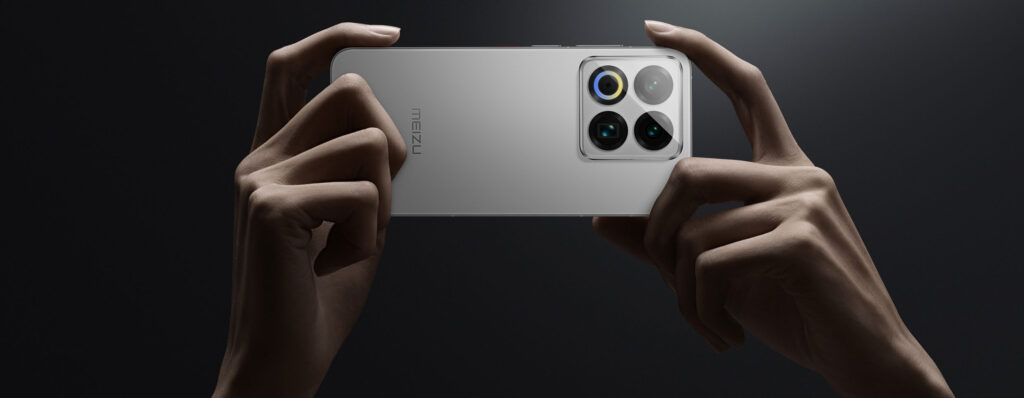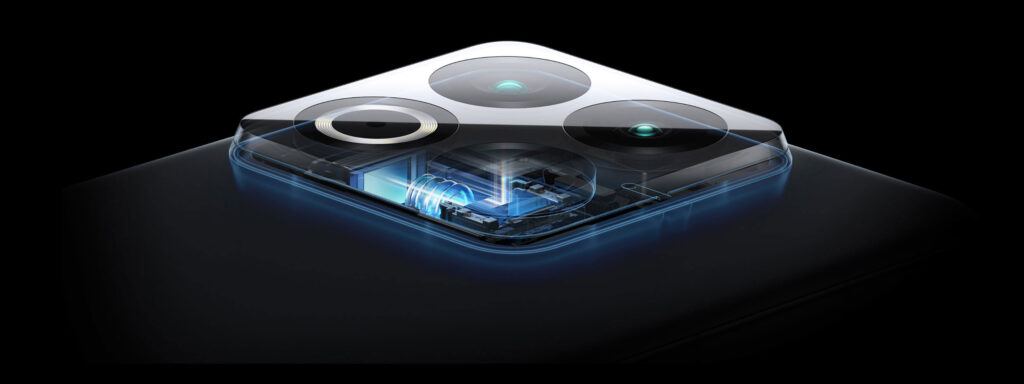
The Meizu 22 has been officially unveiled, demonstrating impressive capabilities across design, display technology, imaging, performance specifications, and intelligent user interface.
The design is a key highlight, with the Meizu 22 available in White, Pink, and Black. It has a weight of 190 grams and a thickness of 8.15 millimeters, offering a comfortable in-hand feel. A 2.5D slightly curved front glass is combined with a 1.2mm symmetrical four-sided bezel and a 50:50 balanced design, projecting a refined aesthetic. A dedicated AI button provides single-press access to over 20 quick functions. The rear panel features a “floating back cover design” along with a “borderless floating quad-matrix array” camera module. The Aicy dynamic ring adds a visually distinctive element.
The phone incorporates a 6.3-inch 1.5K resolution direct display with a 1-120Hz adaptive refresh rate. It supports an always-on display (AOD) mode, a global peak brightness of 1800 nits, a localized peak brightness of 6000 nits, and 100% coverage of the DCI-P3 color gamut. “Nature Eye Protection Technology” is implemented for comprehensive eye comfort.
The rear camera system and the front-facing camera both employ 50MP sensors. The rear system offers wide-angle, telephoto, and ultra-wide-angle lenses, each with distinct strengths. OIS optical image stabilization is included, and the front camera features AI beauty enhancement algorithms and HDR capabilities for backlit portraits.
Performance is driven by the Snapdragon 8s Gen 4 processor and a 4500mm² VC liquid cooling system. A 5500 mAh battery supports 80W wired charging and 66W wireless charging. The Flyme AIOS 2 operating system provides a range of AI-powered features and car connectivity. Additional specifications include a super-sensitive X-axis linear motor, infrared remote control, UWB digital key support, and a borderless super antenna architecture designed for stable network signal performance. The Meizu 22 is a compelling contender in the current smartphone landscape.

ESD (Electrostatic Discharge) components are specialized electronic components designed to safeguard electronic devices from the damaging effects of electrostatic discharge. ESD is a sudden release of static electricity that can compromise the functionality or lifespan of sensitive electronic components. ESD components mitigate this risk by diverting, absorbing, or dissipating ESD events.
In mobile phones, ESD components are critical for protecting internal circuitry from ESD-induced damage. Due to the sensitivity of many components within a mobile phone, multiple ESD components are strategically placed to provide comprehensive protection. These components commonly include ESD diodes, TVS diodes, and other specialized protection devices.
Specifically, ESD components in mobile phones serve to protect various areas:
- Interface Protection: ESD protection is essential for interfaces such as charging ports, headphone jacks, and USB connectors to prevent damage from ESD events during connection.
- RF Circuit Protection: Radio Frequency (RF) circuits are highly susceptible to ESD and require dedicated ESD components to maintain signal integrity and prevent component failure.
- Processor and Memory Protection: Core components like processors and memory ICs require ESD protection to ensure reliable operation and data integrity.
- Touchscreen and Display Protection: Touchscreens and displays, integral to the user experience, are also vulnerable to ESD damage and are protected by dedicated ESD components.
In conclusion, ESD components are vital for protecting the internal electronics of mobile phones from ESD damage, ensuring their reliable operation, and extending their lifespan. Their strategic implementation is essential for maintaining device functionality and user satisfaction.